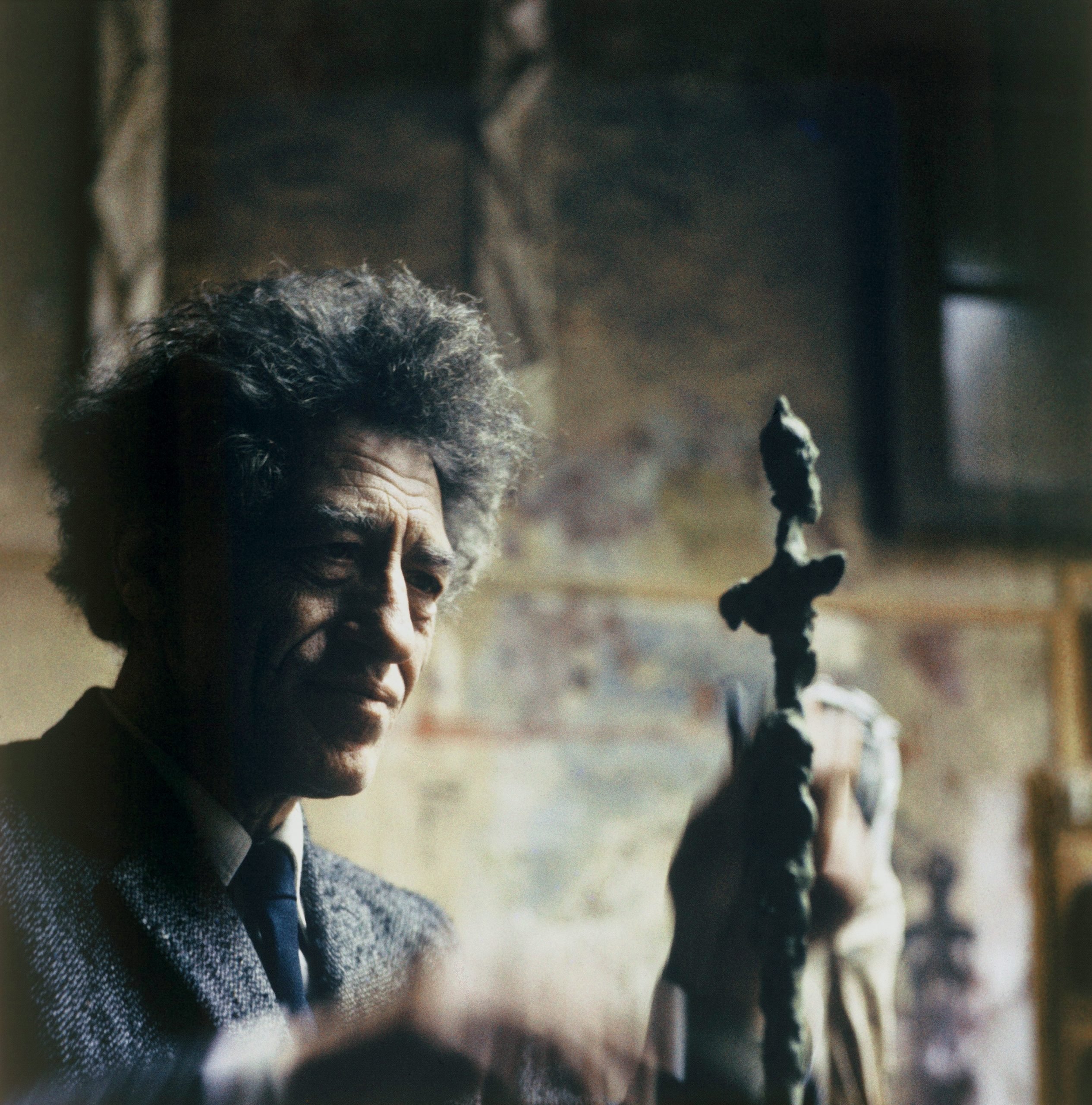
The 1955 merger of Chase National Bank and the Bank of Manhattan was a mighty financial move, backed up by a grand architectural one. For its Financial District headquarters, the company placed a 60-story monolith of aluminum and tinted glass amid a scene of stone and spires. No such tower had been built in the area since the Great Depression.
Just as ostentatious was the decision to dedicate three quarters of the site to a plaza, flaunting Lower Manhattan’s most precious commodity: space. But how to fill this empty 1.8-acre expanse? With blue chip sculpture, of course. The bank’s art committee, comprised of David Rockefeller, architect Gordon Bunshaft, and Museum of Modern Art notables first turned to Alberto Giacometti for the task.
It was an idealistic, if misguided choice. The Paris-based artist had neither been to New York nor ever seen a skyscraper. According to his biographer, James Lord, Giacometti was scared of heights and large, open spaces. Good luck, then, Alberto.
Nonetheless, Giacometti accepted the commission. He was drawn to the ceaseless movement of people he saw in Europe’s squares, once commenting that “in the street, people astound and interest me more than any sculpture or painting.”
His interest in large public works can be traced to 1930’s Model for a Square, in which geometric shapes represent the elements of the Garden of Eden. Piazza and City Square, miniatures he produced just after the war, extend this thread and feature the elongated figures with which he became synonymous.
He began work in 1958 by creating a model of the space, based on the plaza’s dimensions, in his studio. “I always had a sneaking desire,” Giacometti said, “to know what I could make as large as possible.” Still, the scale proved perplexing. How tall, exactly, was the committee expecting?
Bunshaft had hoped the Swiss artist would simply enlarge Three Men Walking, a tabletop bronze of skeletal figures. The presence of 60-foot-tall alienated men striding outside a banking megalith might have made a poetic comment on 1950s America, but Giacometti demurred. He didn’t want the sculpture to dominate the plaza or to be chiefly notable for its size.
Instead, Giacometti proposed an arrangement that brought together three of his signature motifs: the standing woman, the walking man, and the omniscient head. He estimated they would be a mere eight or nine feet in height and began experimenting in his Montparnasse studio, hauling works into the street to consider their effect in open air.
Giacometti produced three versions of Walking Man, two of Large Head, and four of Tall Woman, which perhaps showed the most promise. They’re the largest sculptures he ever made, figures of majestic stoicism that emerge seemingly from the roots of a spindly tree becoming something solemn and watchful.
Alas, the scale of his sculptures proved irreconcilable with the surrounding tower blocks and, after a year of trial and error, Giacometti withdrew from the project, calling his efforts “wide of the mark in a big way.” In time, however, the studies would be cast and have come to be considered masterpieces.
The bank’s art committee also struggled to fulfill the commission. It sought out Alexander Calder, Dimitri Hadzi, Henry Moore, Isamu Noguchi, and William Zorach, but remained unconvinced by the submissions. Then, while traveling in Paris, Bunshaft encountered an exhibition of Jean Dubuffet’s giant sculptures and proposed him. The committee approved, and in 1972 it installed Group of Four Trees, a 42-foot-high sculpture of white fiberglass with interior shapes outlined in zigzagging black lines.
As for Giacometti, the story goes that on his solitary visit to New York, in 1965, the artist visited the plaza and arranged Lord, Bunshaft, and his wife around it, trying in vain to discover a satisfying configuration. He died three months later.
What’s the deal with Leonardo’s harpsichord-viola? Why were Impressionists obsessed with the color purple? Art Bites brings you a surprising fact, lesser-known anecdote, or curious event from art history.